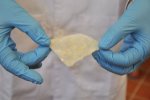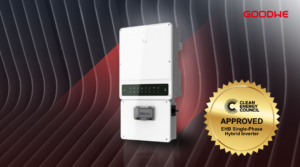Researchers from the National University of Singapore’s Nanoscience and Nanotechnology Initiative (NUSNNI) have created an energy-storage membrane; a world first.
According to the researchers, their development will lead to more economical and earth-friendly electricity storage and supply solutions.
Led by Principal Investigator Dr Xie Xian Ning, the NUSNNI team developed a polystyrene-based polymer sourced from organic waste that when deposited between two charged graphite plates, can store an electrical charge of 0.2 farads* per square centimetre – well above the usual upper limit of 1 microfarad per square centimetre possible with a standard capacitor.
“Compared to rechargeable batteries and supercapacitors, the proprietary membrane allows for very simple device configuration and low fabrication cost. Moreover, the performance of the membrane surpasses those of rechargeable batteries, such as lithium ion and lead-acid batteries, and supercapacitors,” said Dr. Xie.
The energy storage system can be developed at cost of just US$0.62 per farad, compared to US$7 to store each farad using existing technologies employing the use of electrolytes, such as standard deep cycle batteries.
Dr. Xie believes given the simplicity of the design, superior performance, environmental benefits, and low manufacturing cost; the development could change the current status of energy storage technology. The team is now searching for opportunities to work with venture capitalists to bring their patented energy storage membrane to market – and many owners of off-grid solar power systems will be thinking the sooner that occurs, the better.
NUSNNI was launched on 14 January 2002 and comprises the joint effort of the National University of Singapore’s Faculties of Engineering and Science. The team’s research on energy storage membranes was supported by grants from the Singapore-MIT Alliance for Research & Technology and and the National Research Foundation
* A capacitor’s storage potential, or capacitance, is measured in units called farads – more on the farad unit of measurement here.












































